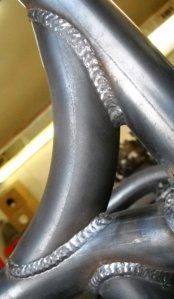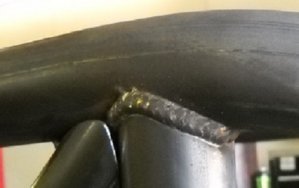WARRIORWELDING
Owner opperator Of WarriorWelding LLC.
- Joined
- Jan 6, 2008
- Location
- Chillin, Hwy 64 Mocksville NC
I would like to mess with a spool gun, I'm guessing its pretty hard to make it look that good....
Looking Great for what I understand about mig welding aluminum!
the first thing they teach you in testing and inspection:
IF IT DOESN'T LOOK GOOD MOST LIKELY IT ISN'T
But having said that I've seen some purty stuff fall apart.
As for the Aluminum its 75% set up and 25% input and 100% got to be clean to start with. The number one user error is the angle of approach, you gotta forhand the bead and push the weld. 25 to min of 15 degrees approach angle set on "sizzle".




 pass me down some knowledge boyz!
pass me down some knowledge boyz!

 , just trying to see what works for what we build.
, just trying to see what works for what we build.

